Bottom feeders and concrete: Carp turn Grand Marais Drain into spawning grounds
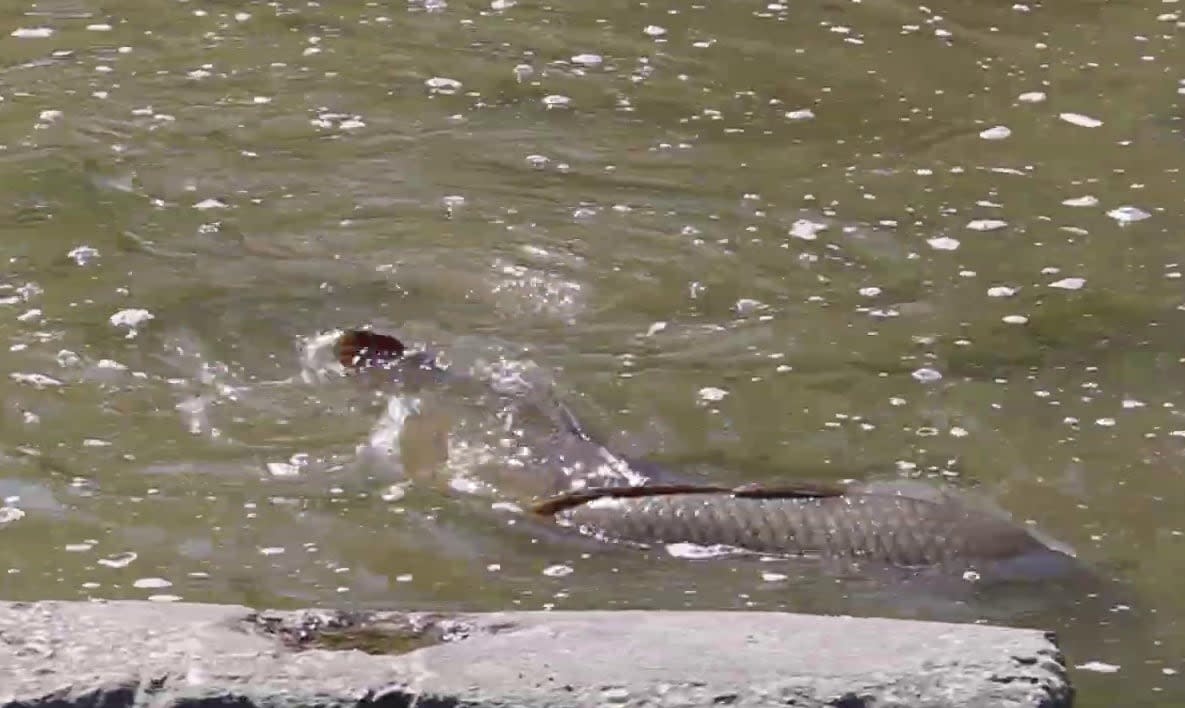
With its concrete embankments and urban setting, the Grand Marais Drain in South Windsor isn't a body of water that most would consider to be teeming with life — or a potential food source.
But that's what a recently uploaded YouTube video shows: a group of large fish, squirming around each other in the shallows of the drain.
"It's a lot of sex amongst fish," said Joshua Haddad, 29, the person responsible for the video.

Windsor wildlife photography enthusiast Joshua Haddad stands near the Grand Marais Drain in the city's south end in March 2024. (Dalson Chen/CBC)
Although Haddad posted the video a couple of weeks ago, he recorded it in May 2023 — around the west end of the Grand Marais Drain, where the concrete meets more natural areas.
"I walk around in those natural areas, particularly on the west end, quite a bit. I had never before heard this noise that was coming from the water," Haddad said. "It started as a splashing and turned into what I realized were fish thrashing around."
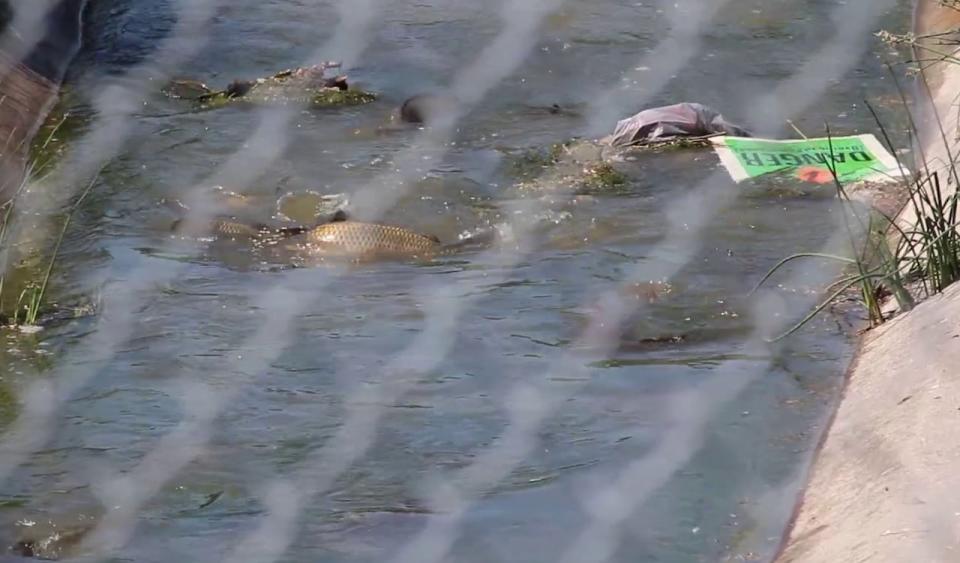
Carp exhibit spawning behaviour in Windsor's Grand Marais Drain in May 2023. (Joshua Haddad/Wild in Windsor)
A math teacher, Haddad enjoys taking photos and videos of local wildlife as a hobby (he has an Instagram account called @wildnwindsor). But he wasn't aware that the Grand Marais Drain is a spawning ground for fish until his personal experience last spring.
But what kind of fish would use a drain for reproductive purposes? According to a researcher with the Great Lakes Institute for Environmental Research (GLIER), it's Cyprinus carpio — the common carp.
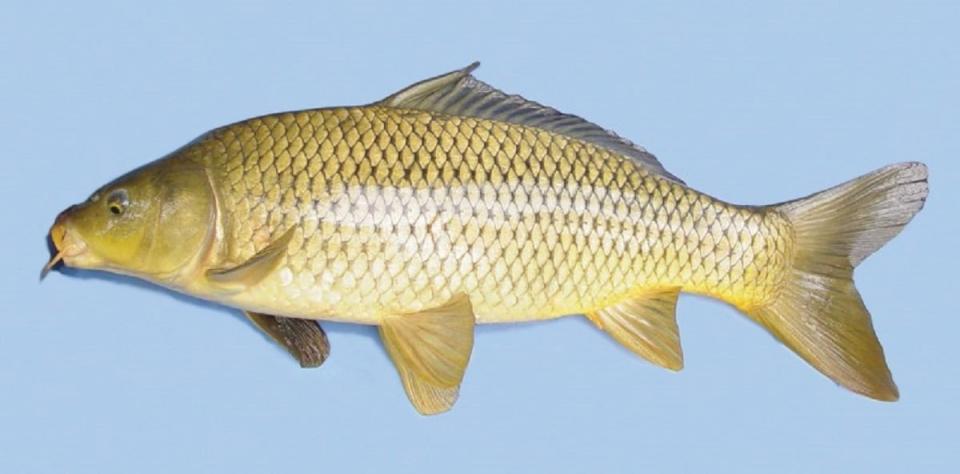
An example of an adult common carp specimen (Cyprinus carpio). (Ontario Ministry of Natural Resources)
The nuisance of Eurasian carp
"They've been around here for several decades now," said Trevor Pitcher, a professor of integrative biology with GLIER. "They're seen all over the province, from the St. Lawrence River all the way up to Lake Superior, in some number. And they spawn every year."
Like many freshwater fish during spawning season, common carp (also known as Eurasian carp) seek out wetlands where their adhesive-covered eggs can stick to submerged vegetation or underwater clutter.
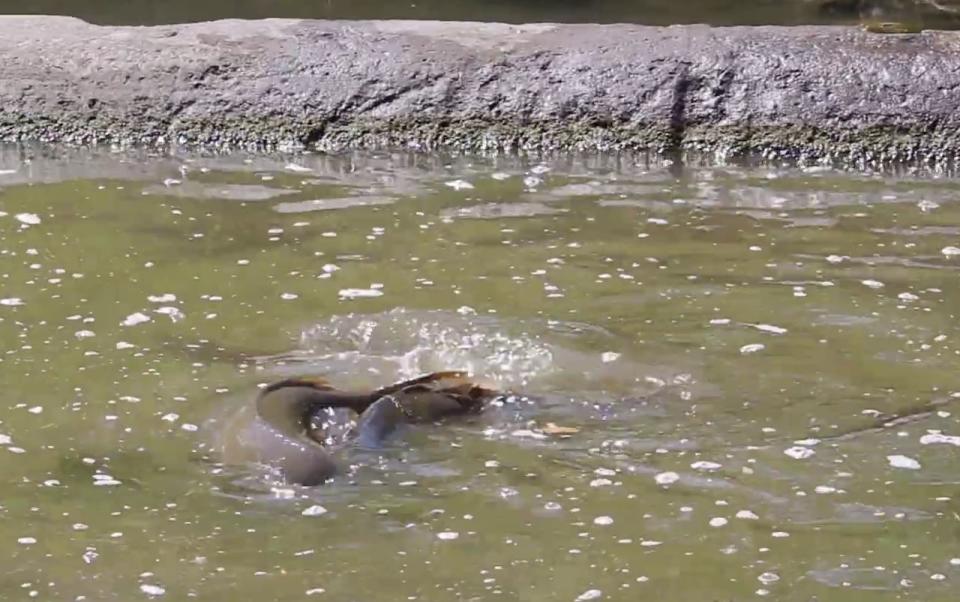
Carp exhibit spawning behaviour in Windsor's Grand Marais Drain in May 2023. (Joshua Haddad/Wild in Windsor)
A single female will lay hundreds of thousands of eggs in one spawn. She'll be pursued by multiple males — as many as 20 at a time — eager to externally fertilize her eggs.
The thrashing comes from the female trying to scatter her eggs widely and the males fighting to release their sperm upon the egg clutches.

Trevor Pitcher, a professor of integrative biology with the Great Lakes Institute for Environmental Research, discusses the common carp in the Grand Marais Drain. (Dalson Chen/CBC)
"Typically, we see these carp most often in marsh areas, digging up vegetation. But when they're desperate, and they want to reproduce, they're going to find a way to do it," Pitcher explained.
"So they will take advantage of urbanized areas like the drain way, and they'll find small areas where there's a bit of grass or vegetation — and they will eventually do what they need to do to survive."
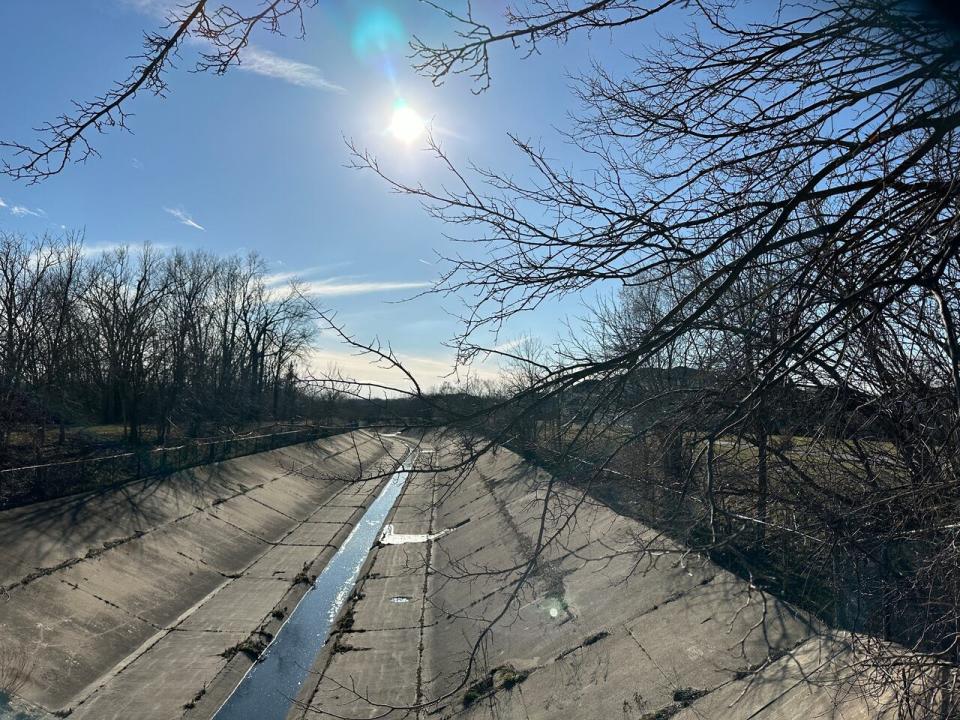
A view of the Grand Marais Drain in South Windsor in March 2024. (Dalson Chen/CBC)
Survival as a species is something the common carp excels at. Despite having a significant presence across the province for the better part of a century, the fish aren't actually native to North America. Carp were intentionally introduced to the continent in the 1800s by the U.S. government.
"It certainly is a nuisance species," Pitcher said. "It gets into these wetlands, digs up the bottoms, and ruins the vegetation for other species. We lose some that habitat for nurseries for native fish."
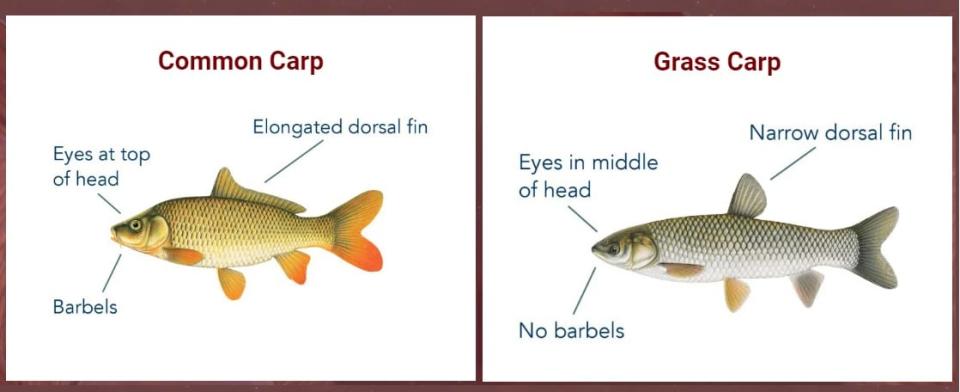
A diagram comparing the common carp with the grass carp - one of four invasive "Asian carp" species. (Ontario Ministry of Natural Resources)
Common carp versus 'Asian carp'
Bothersome as the common carp can be, it's not as concerning to GLIER as the four "Asian carp" species that are considered a more recent and invasive threat. Silver carp, black carp, bighead carp, and grass carp can all easily out-eat and out-compete native fish.
Pitcher said the fish in Haddad's video aren't any of those four kinds of carp. "There's been no evidence for any of these 'Asian species' spawning in the Grand Marais Drain. In fact, there's been very limited evidence of them being in the Great Lakes system, over the years. Certainly no established populations that [GLIER] is aware of — and we're constantly monitoring."
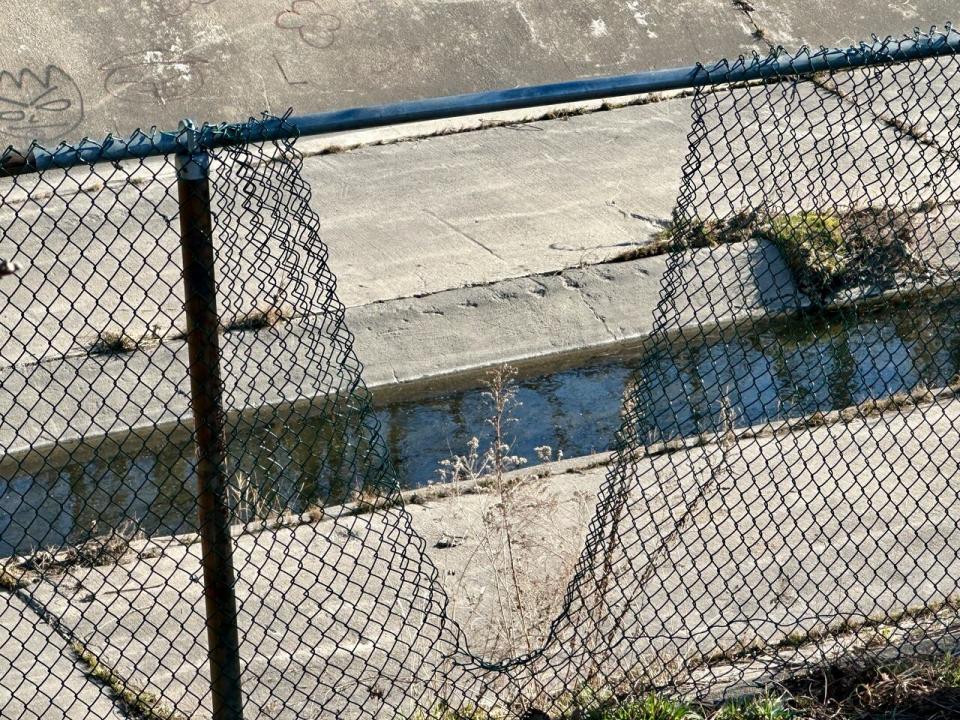
A look at the water in the Grand Marais Drain in South Windsor in March 2024. (Dalson Chen/CBC)
Fishing for food (except for bottom feeders)
For local anglers who keep an eye on spawning calendars, it's no shock that the life cycle of common carp brings them to the Grand Marais Drain every spring.
Some fishing folks say there are people who take advantage of the abundance and activity of carp in the drain to catch them for eating purposes — dipping their poles into the waters where the drain becomes Turkey Creek.
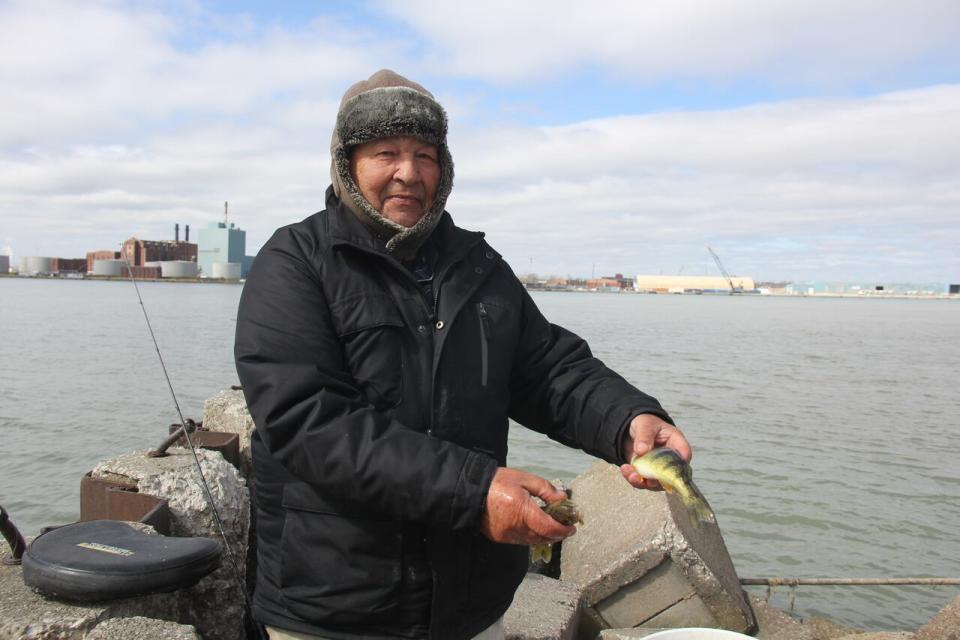
Amateur angler Joseph Joseph Rostkowicz shows off the yellow perch he caught out of the Detroit River in Windsor's west end on March 8, 2024. (Michael Evans/CBC)
"Yeah, in LaSalle," said Joseph Rostkowicz, a recreational fisherman who spoke with CBC Windsor while fishing the riverfront in the Sandwich area. "We are lucky, that way. We can fish all-year round, right?"
Rostkowicz said he has fished the drain/creek before, especially closer to the pedestrian bridge in LaSalle's Vincent Marcotte Park. But carp aren't his catch of choice.
"That's a bottom feeder, you know. It's not a clean fish," Rostkowicz said. "I don't eat silver bass either."
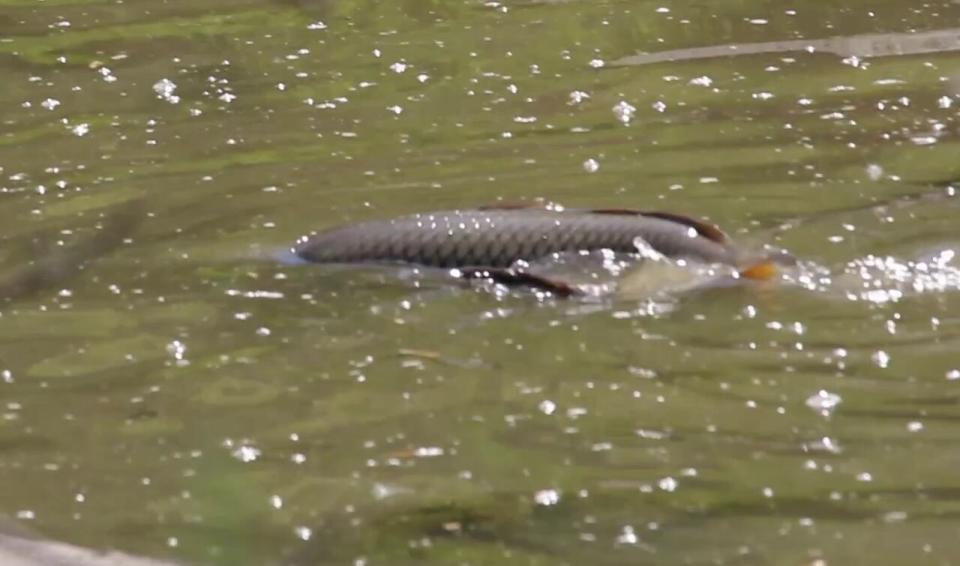
Carp specimens exhibit spawning behaviour in Windsor's Grand Marais Drain in May 2023. (Joshua Haddad/Wild in Windsor)
Instead of carp, Rostkowicz brings home the yellow perch and walleye he pulls out of the Detroit River and its tributaries. His favoured cooking method: Battering the fillets in flour for pan-frying, with a side of potatoes.
And despite Rostkowicz's qualms about eating carp, he doesn't have such reservations about consuming fish from local waters in general.
"Everybody says, 'How can you eat fish from the Detroit River?' Well, this water is not from the Detroit River," Rostkowicz said, gesturing to the Sandwich riverfront.
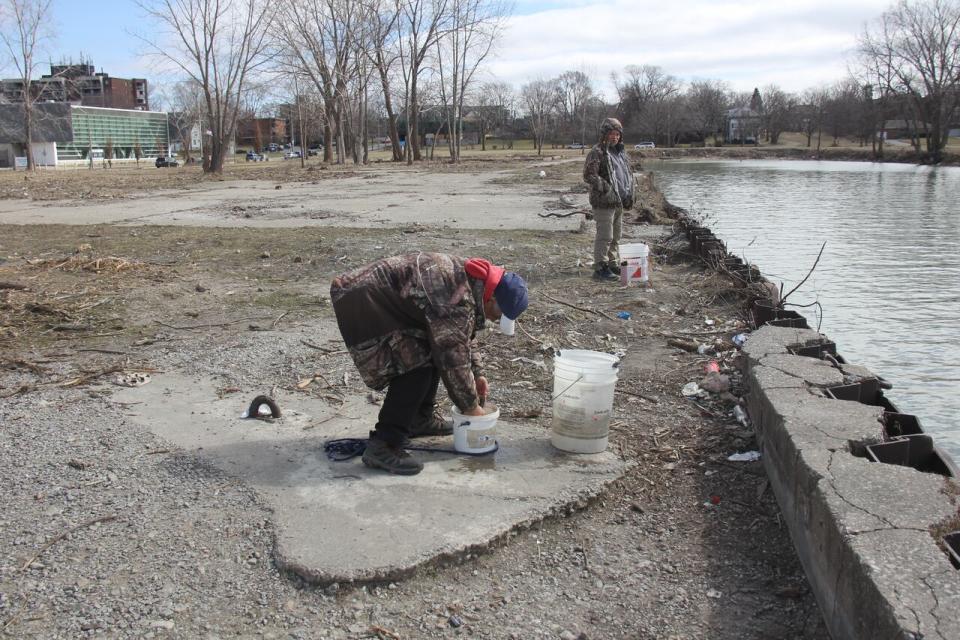
Amateur anglers Dan Iannicello and Dao Cao seek yellow perch out of the Detroit River in Windsor's west end on March 8, 2024. (Michael Evans/CBC)
"This goes all the way from Lake Superior, dumps into Lake Erie, then Lake Ontario, and then all the way to the ocean. The water doesn't stay here a long time."
"So, in other words, the fish is edible," Rostkowicz insisted. "There's still mercury. Every fish has mercury. But as long as you don't eat it every day, you limit that, you can do it."
An 80-year-old retiree, Rostkowicz said he doesn't depend on fishing to put food on his table. He often gives away some of his catch to his daughter and his son.
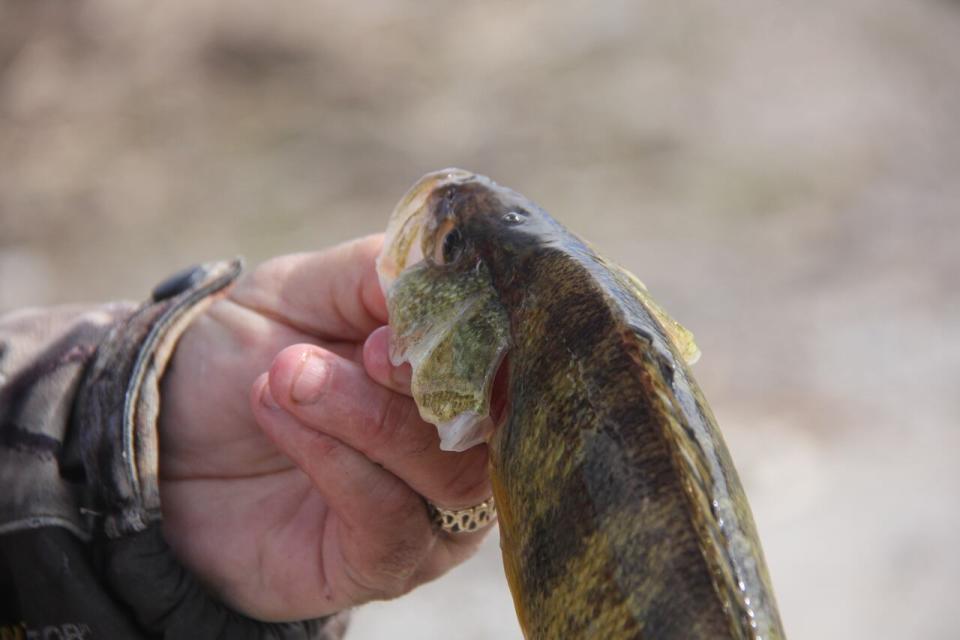
A yellow perch after being caught by fishermen at Windsor's riverfront. (Michael Evans/CBC)
But he understands how fishing for food — even when it's carp from the Grand Marais Drain — could help any family's grocery bill.
Yellow perch, for example, is selling at Real Canadian Superstore for $25 per pound.
Pointing to his bucket with 10 yellow perch from one morning of fishing alone, Rostkowicz said: "I got at least two, three pounds. So, you can figure it out, right? This is over $50 worth of fish right there."

Windsor-Essex fishing guide, bait company owner, and fishing gear store owner Jon Bondy inside his business on County Road 17 in Maidstone. (Dalson Chen/CBC)
Western anglers look down on catching carp
Local fishing guide and bait company owner Jon Bondy gladly promotes angling for recreation and for lightening grocery bills.
"I've probably saved thousands of dollars in my life by just catching my own dinner out there," Bondy said. "The fish in this area are generally easy to catch. They're plentiful, they're clean, they're healthy, they're good to eat."
But Bondy doesn't include common carp in his personal fishing menu — although he acknowledges it's a popular catch in many Asian and some European immigrant communities. "It's part of their heritage... Other parts of the world consider carp a delicacy."
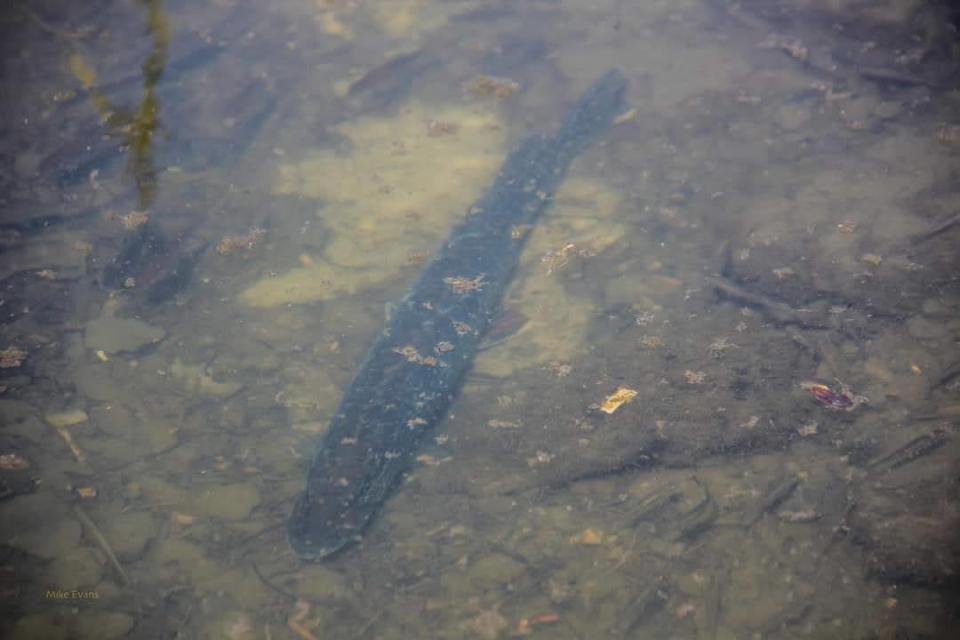
A fish swims in Windsor's Grand Marais Drain. (Michael Evans/CBC)
Indeed, culture might be the main reason more fishing enthusiasts in the western world don't go for carp. "Anglers in North America, they're after fish that their fathers and their grandfathers chased. Muskie, trout, walleye, bass, things like that," Bondy explained.
"Carp are a bottom feeder, like catfish, and anglers just don't seem to be interested in them — even though they pull."
"When [carp] get on the line, they really pull and bend the line. They're fun for kids."
All that said, Bondy's not surprised that carp are spawning in the Grand Marais Drain — nor is he surprised that people are catching them for food.
"Any kind of tributary in the early spring is going to bring fish. Carp will run up creeks and rivers just like a trout would. It's not unusual for them to be up there. Even if it's a man-made feature. As long as it's connected to the main body of water, it can attract fish when it's time to spawn."
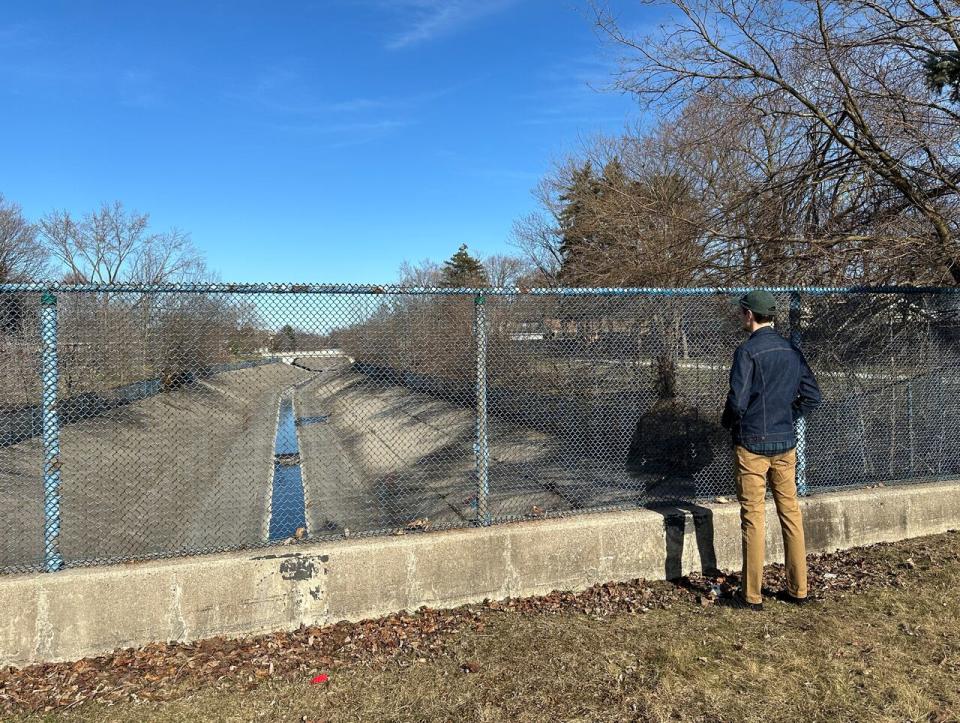
Wildlife photography enthusiast Joshua Haddad has a look at the Grand Marais Drain in South Windsor in March 2024. (Dalson Chen/CBC)

